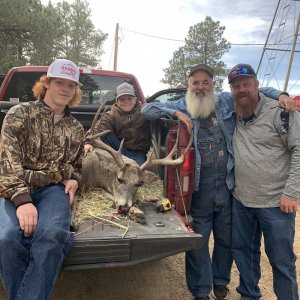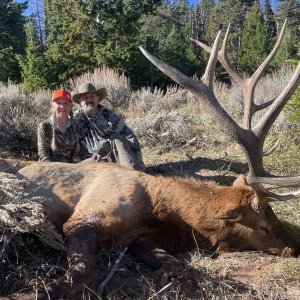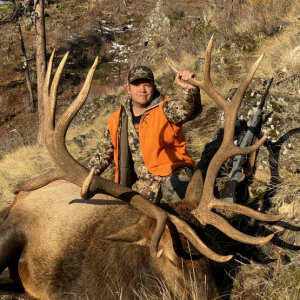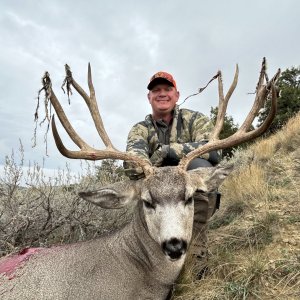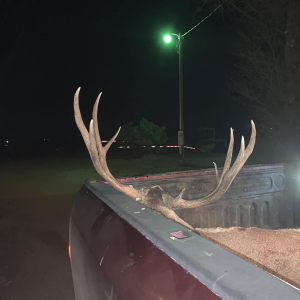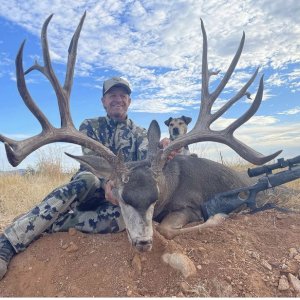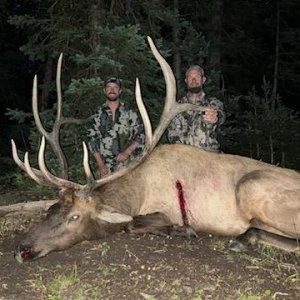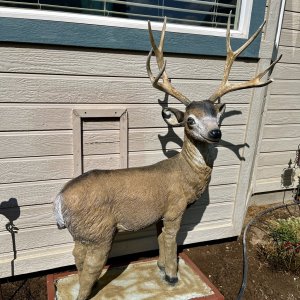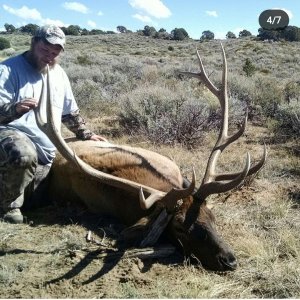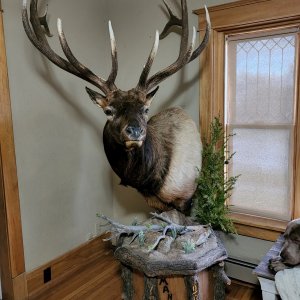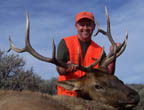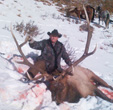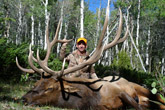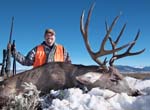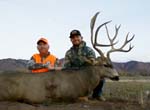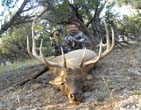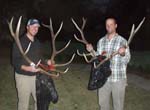Here's an interesting New Mexico desert sheep article:
Figure 2. Population estimates of bighorn in New Mexico before and after implementation of the cougar removal program 1980-2008 (237 bighorn released 1987-2001, and 178 bighorn released 2001-2008).
Science and Hard Work, A Story About Saving Desert Bighorn Sheep in New Mexico
Elise J. GoldsteinEric M. RomingerBryan C. Bartlett
Desert bighorn sheep populations in New Mexico are on the rise, as evidenced by downlisting them from state endangered to state threatened in 2008. Historically, desert bighorn likely roamed most arid mountain ranges in southern New Mexico. Unfortunately, populations had declined significantly by the early 1990s, and by 1940only 2 populations remained. Thus began a long and ongoing effort by many individuals, organizations, and agencies, to save desert bighorn in New Mexico.
The Desert Bighorn Recovery Program
Recognizing the need for source stock to repopulate wild herds, the New Mexico Department of Game and Fish (NMDGF) started a captive breeding program at the Red Rock Wildlife Area in 1972. It has since been expanded to encompass 5 km2 of canyons, springs, and steep slopes that the bighorn population calls home. Since 1979, a total of 353 bighorn have been transplanted out of the facility and into the wild. Thanks to our friends in Arizona, an additional 74 have been transplanted from the Kofa National Wildlife Refuge, AZ.Desert bighorn were listed as a state endangered species in New Mexico in 1980. Despite transplant efforts, bighorn recovery made scant progress as numbers in the wild never exceeded 215 in the 1980s and 1990s.
Monitoring efforts in the 1990s documented that cougar predation was responsible for approximately 85% of all known-caused mortality of radio collared desert bighorn. This prompted the State Game Commission to approve a management action to remove cougars in desert bighorn range. Cougar removal was effectively implemented in autumn 2001 by contracted snaremen and houndsmen, when the statewide wild desert bighorn population was less than 170. Cougar control was conducted in the Peloncillo, Hatchet, San Andres, and Ladron mountains. In the Fra Cristobal Mountains, cougar removal intensity varied over time such that cougar control was established only rarely, resulting in a less aggressive management action. In conjunction with cougar removal, all adult bighorn transplanted to the wild were radio collared, and field biologists monitored the populations topromptly detect mortalities and facilitate cougar capture when necessary. Annual ground and/or helicopter population surveys were conducted to monitor population size.
The Program’s Impact on Cougars
Cougars are a big game animal in New Mexico, with a hunting season from October to April. Under the bighorn protection program, an average of 3.3 cougars was killed per mountain range each year. Removal occurred on less than 1% of total cougar habitat in New Mexico, and represents less than 1% of the estimated statewide population. The total number of cougars killed per management zone, including those taken specifically to protect bighorn, has been below the maximum number allowed to maintain sustainable cougar populations as established in the NMDGF Harvest Management Matrix.The
Program’s Impact on BighornMortality rates - To evaluate the impact cougar predation has had on desert bighorn populations in the New Mexico, we collected data from radiocollared bighorn from 1992-2008 and estimated mortality rates under different management regimes. Mortality data was divided into 3 time periods: 1) a period of minimum protection when few cougars were removed to protect bighorn,; 2) a period of partial protection when some cougarswere removed (Fra Cristobals only); and 3) a period of maximum protection that occurred after cougar removal resulted in no cougar predation for a minimum of 6 months, and continued as long as cougar removal efforts were implemented. The statewide desert bighorn total mortality rate decreased from 0.23 during the period of minimum protection, to 0.16 during the period of partial protection in the Fra Cristobals, to 0.10 during the period of maximum protection.
During these same periods, the statewide cougar predation rate declined from 0.17, to 0.09, to 0.05.We compared these results with a population model based on bighorn herds in NM. The model predicted that with a cougar predation rate of 0.0, none of the 5 herds would go extinct in 100 years. With a cougar predation rate of 0.05 all herds had at least a 53% chance of extinction in 94 years, and with a cougar predation rate of 0.10 all herds had a 100% chance of extinction in 26 years. Therefore, mortality risks have declined from extinction in less than 26 years, to extinction in about 26 years in the Fra Cristobals, to a 50/50 chance of extinction in the next 100 years in the other herds. For a more detailed analysis, you can access the Evaluation of an 8-year Mountain Lion Removal Management Action on
Endangered Desert Bighorn Sheep Recovery at
www.wildlife.state.nm.us/conservation/bighorn/documents/lions.htmPopulation growth -The impact of cougar removal on bighorn herds can easily be seen in the accompanying graph which illustrates the constant desert bighorn population trend from 1987-2001 when cougars were not removed to protect bighorn, and the substantial increase from 2002-2008 when cougars were actively removed to protect bighorn. The cougar control program, in combination with transplants from Red Rock into the wild, resulted in the population increasing from less than 170 in 2001 to approximately 450 in 2008, and the subsequent downlisting of desert bighorn from endangered to threatened. Given the small number of listed species that recover enough to be downlisted, this is a major victory for bighorn!As bighorn populations grow large enough to sustain some cougar predation without compromising the herd, cougar removal can be reduced. However, current levels of adult losses combined with high lamb mortality limits population growth in most years, leaving the current cougar removal strategy in place.
With statewide numbers increasing, we are in the preliminary phase of considering additional bighorn hunting licenses. While implementation may still be a few seasons away, downlisting desert bighorn is the first step in increasing hunting opportunities so that sportsmen can benefit from the bighorn’s success. This, in turn will help to raise more funds, and increase public awareness concerning the need to balance science and hard work to “put more sheep on the mountain”. Figure 2. Population estimates of bighorn in New Mexico before and after implementation of the cougar removal program 1980-2008 (237 bighorn released 1987-2001, and 178 bighorn released 2001-2008).

 www.outdoorlife.com
www.outdoorlife.com

 www.outdoorlife.com
www.outdoorlife.com






